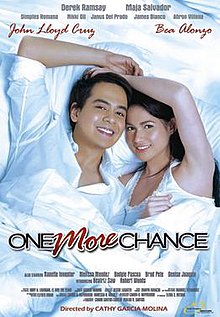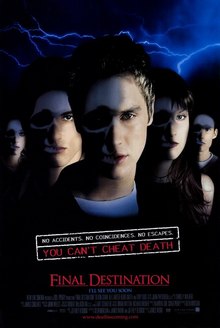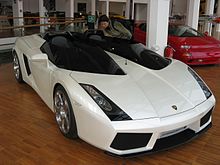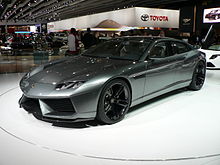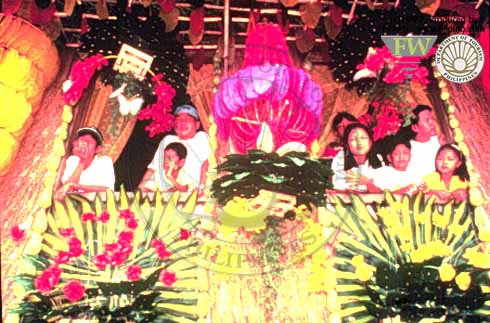Badminton is a
racquet sport played by either two opposing players (singles) or two opposing pairs (doubles), who take positions on opposite halves of a rectangular court that is divided by a net. Players score points by striking a
shuttlecock with their racquet so that it passes over the net and lands in their opponents' half of the court. A rally ends once the shuttlecock has struck the ground, and each side may only strike the shuttlecock once before it passes over the net.
The shuttlecock (or shuttle) is a feathered projectile whose unique aerodynamic properties cause it to fly differently from the balls used in most racquet sports; in particular, the feathers create much higher
drag, causing the shuttlecock to decelerate more rapidly than a ball. Shuttlecocks have a much higher top speed, when compared to other racquet sports. Because shuttlecock flight is affected by wind, competitive badminton is played indoors. Badminton is also played outdoors as a casual recreational activity, often as a garden or beach game.
Since 1992, badminton has been an
Olympic sport with five
events: men's and women's singles, men's and women's doubles, and mixed doubles, in which each pair consists of a man and a woman. At high levels of play, the sport demands excellent fitness: players require aerobic stamina, agility, strength, speed and precision. It is also a technical sport, requiring good
motor coordination and the development of sophisticated racquet movements.
HISTORY
The beginnings of Badminton can be traced to mid-18th century
British India, where it was created by
British military officers stationed there.
[2] Early photographs show Englishmen adding a net to the traditional
English game of
battledore and shuttlecock. Being particularly popular in the British garrison town Poona (now
Pune), the game also came to be known as
Poona.
[2][3] Initially, balls of wool refereed as
ball badminton were preferred by the upper classes in windy or wet conditions, but ultimately the shuttlecock stuck. This game was taken by retired officers back to England where it developed and rules were set out.
As early as 1860,
Isaac Spratt, a London toy dealer, published a booklet,
Badminton Battledore - a new game, but unfortunately no copy has survived.
[4]
The new sport was definitively launched in 1873 at the
Badminton House,
Gloucestershire, owned by the
Duke of Beaufort. During that time, the game was referred to as "The Game of Badminton," and the game's official name became Badminton.
[5]
Until 1887, the sport was played in England under the rules that prevailed in British India. The Bath Badminton Club standardized the rules and made the game applicable to English ideas. The basic regulations were drawn up in 1887.
[5] In 1893, the Badminton Association of England published the first set of rules according to these regulations, similar to today's rules, and officially launched badminton in a house called "Dunbar" at 6 Waverley Grove,
Portsmouth, England on September 13 of that year.
[6] They also started the
All England Open Badminton Championships, the first badminton competition in the world, in 1899.
The International Badminton Federation (IBF) (now known as
Badminton World Federation) was established in 1934 with
Canada,
Denmark, England,
France, the
Netherlands,
Ireland, New Zealand, Scotland, and Wales as its founding members. India joined as an affiliate in 1936. The BWF now governs international badminton and develops the sport globally.
While set out in England, competitive badminton in Europe has traditionally been dominated by Denmark. Indonesia, South Korea, China and Malaysia are among the nations that have consistently produced world-class players in the past few decades and dominated competitions on the international level, with China being the most dominant in recent years.
http://en.wikipedia.org/wiki/Badminton



